Year 10 Lines and Angles Worksheets
Angles on Parallel Lines (C)
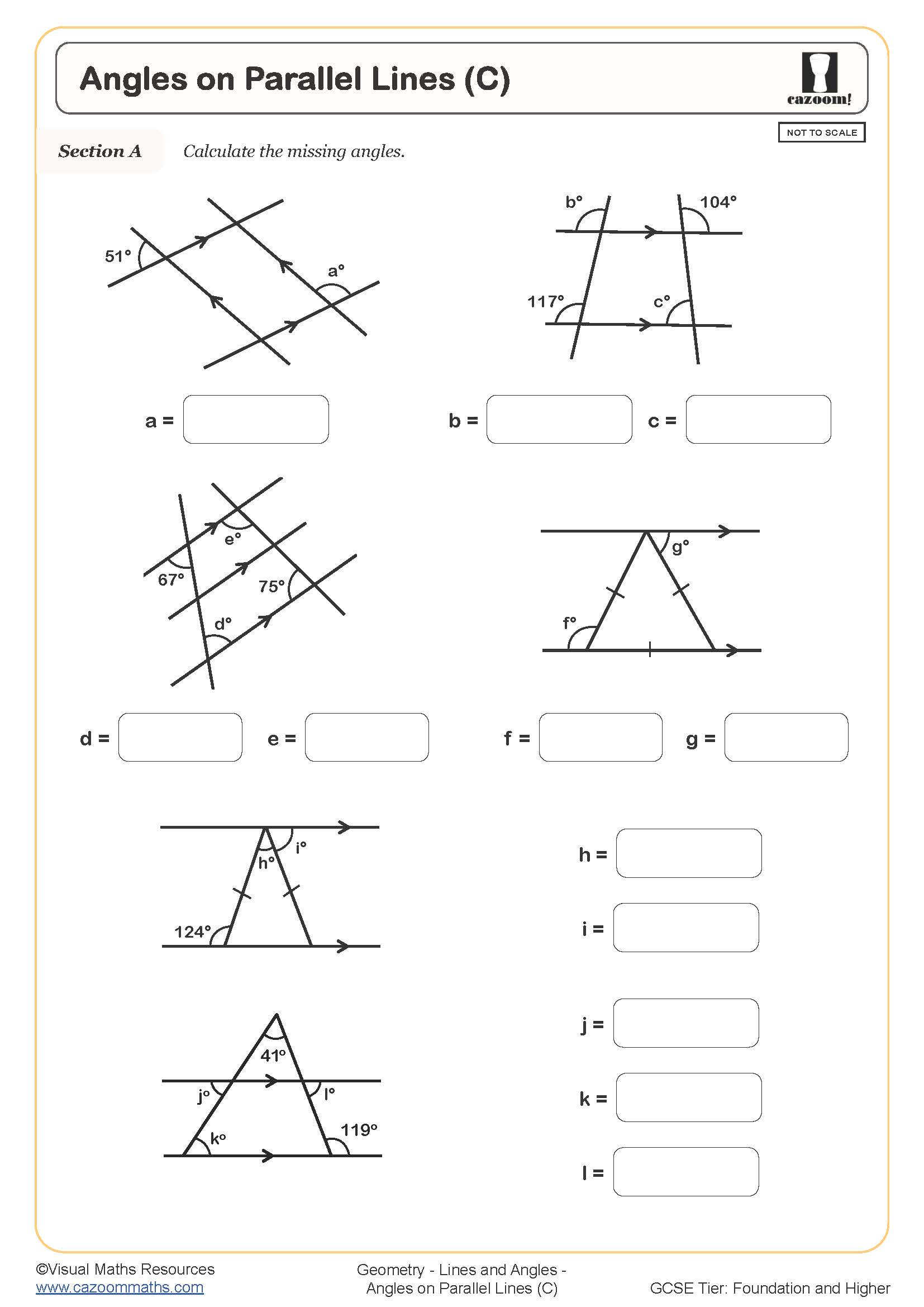
Angles on Parallel Lines (C) (With Clues)
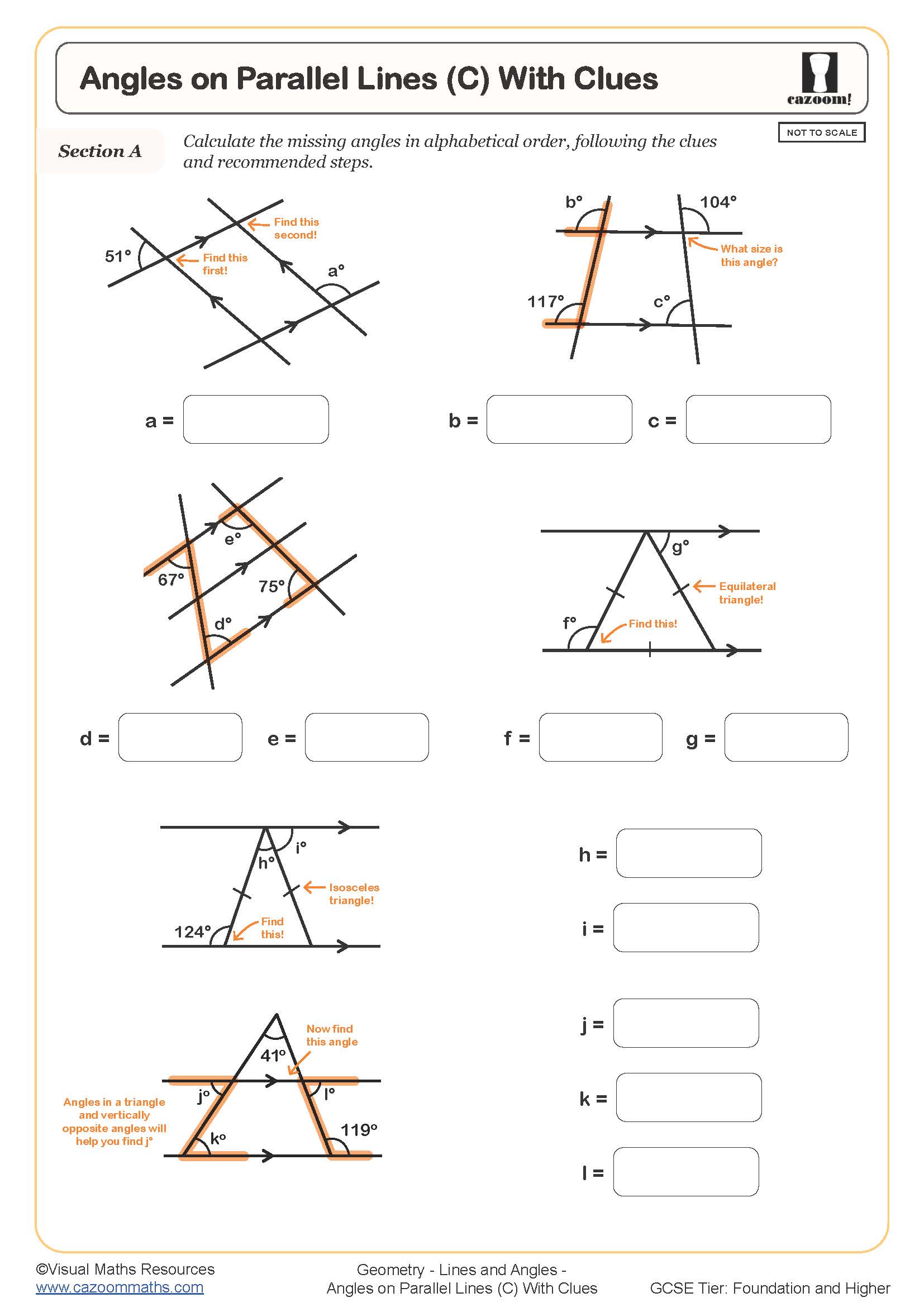
Calculating Angles (B)
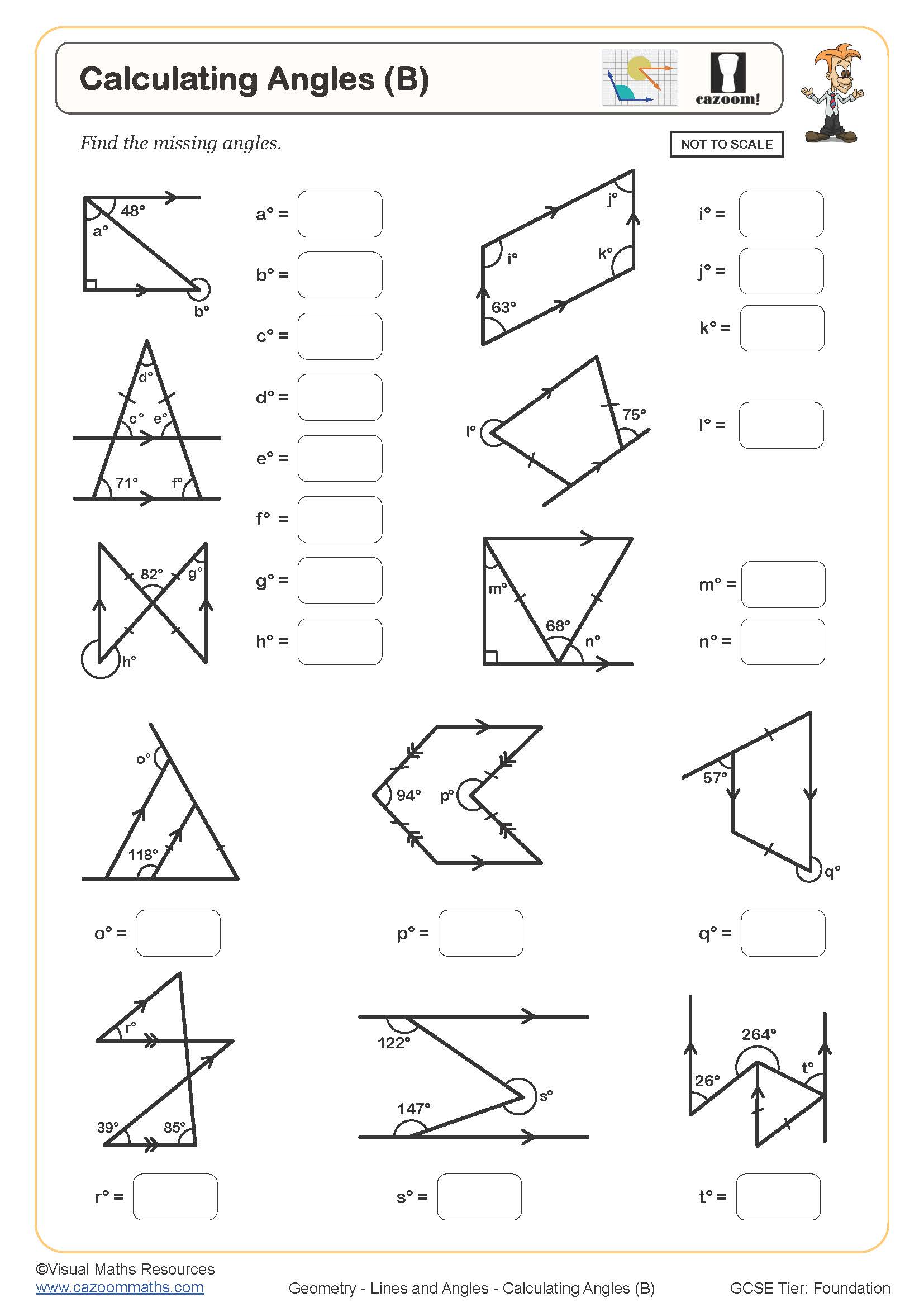
Calculating Angles (B) (With Clues)
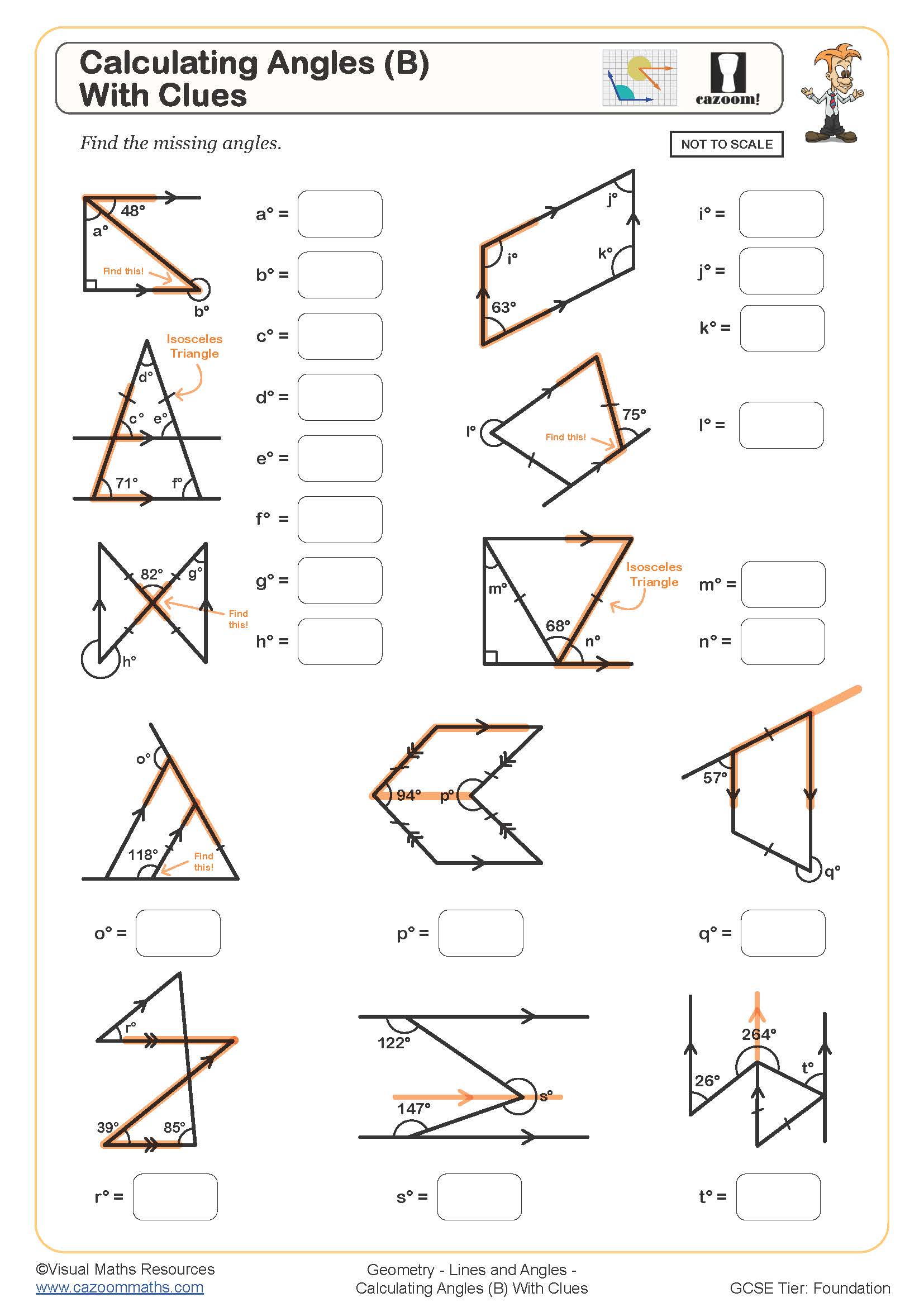
Circle Theorems (A)
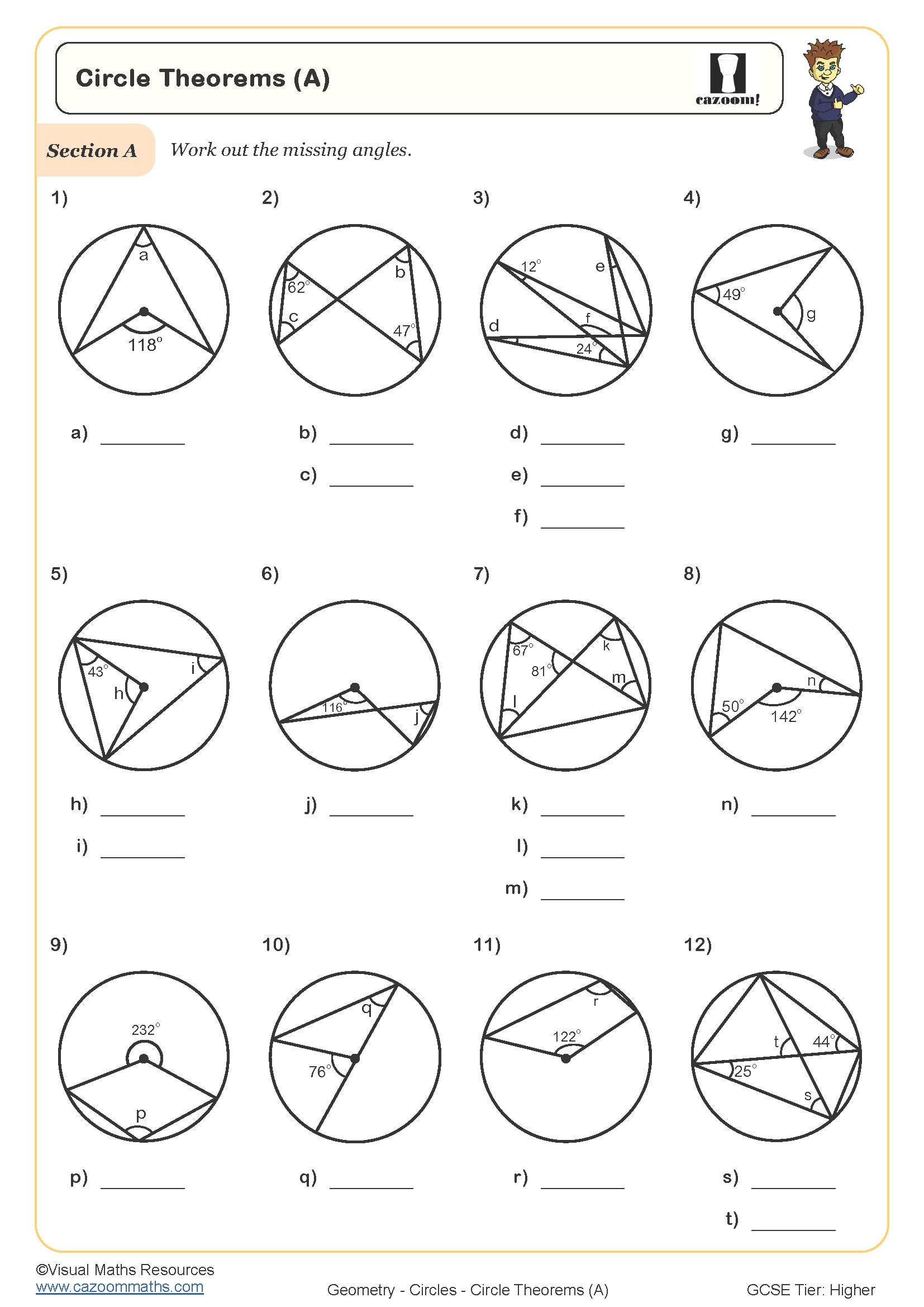
Circle Theorems (B)
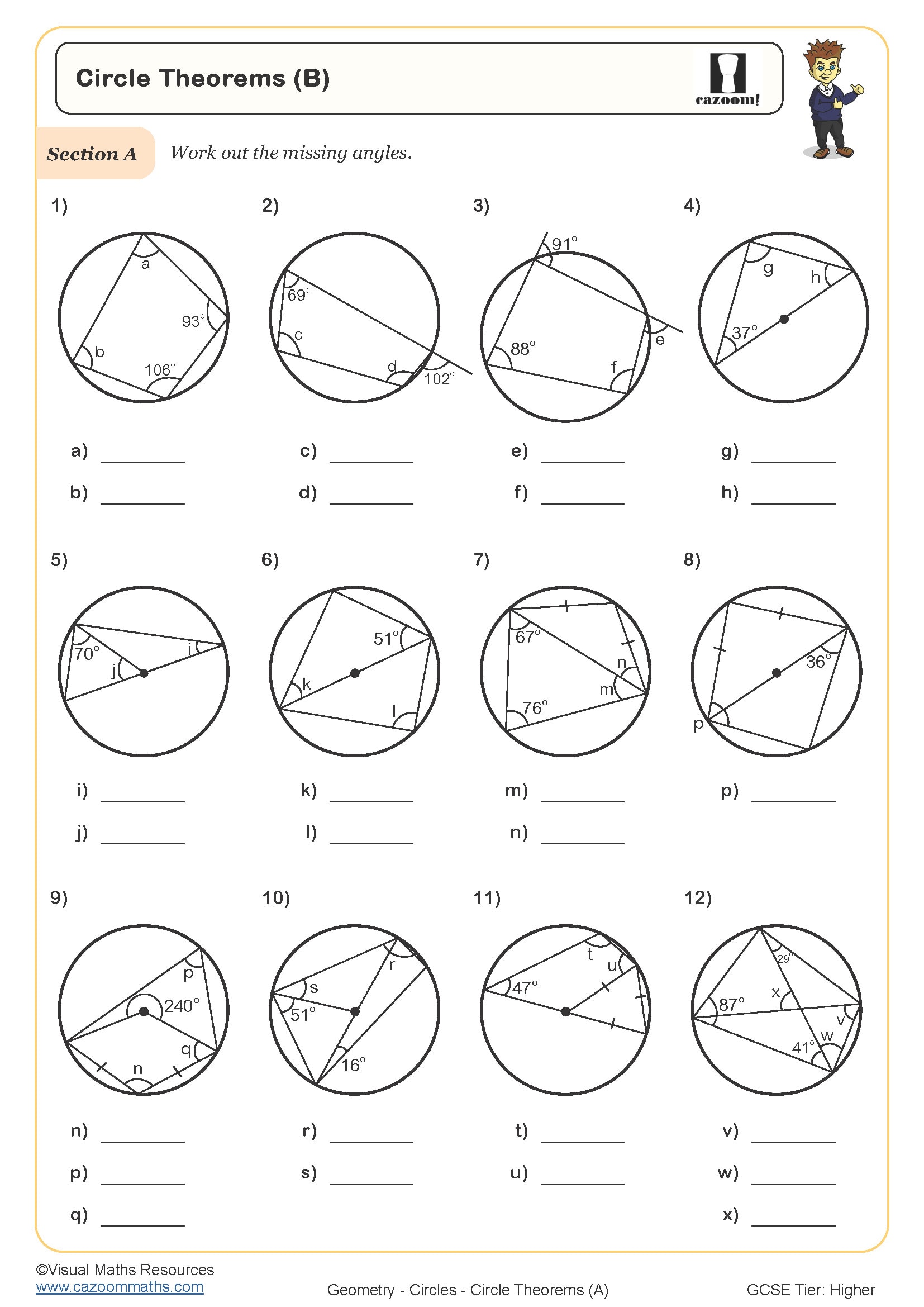
Circle Theorems (C)
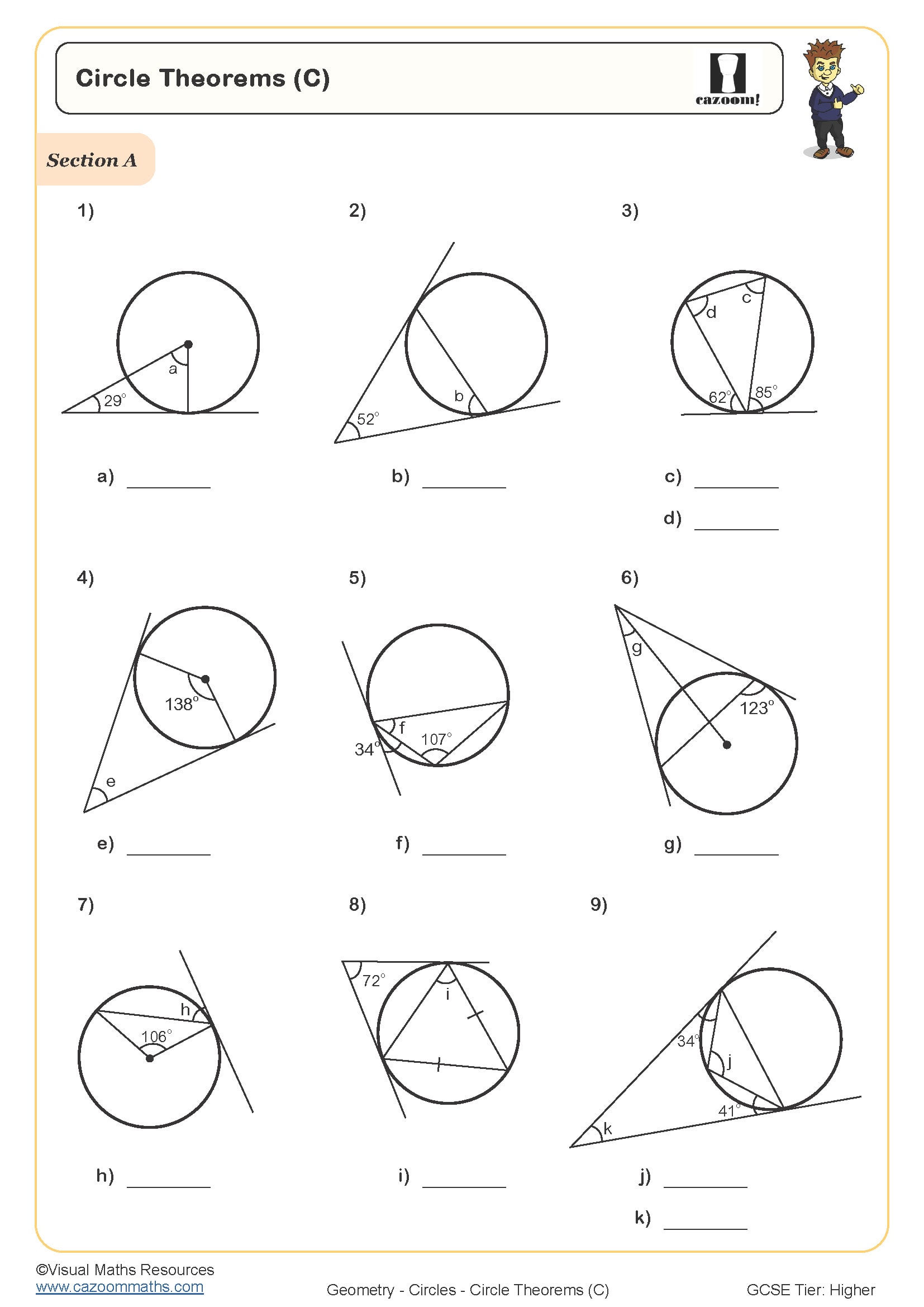
Circle Theorems: Angle at Center Twice the Angle at Circumference
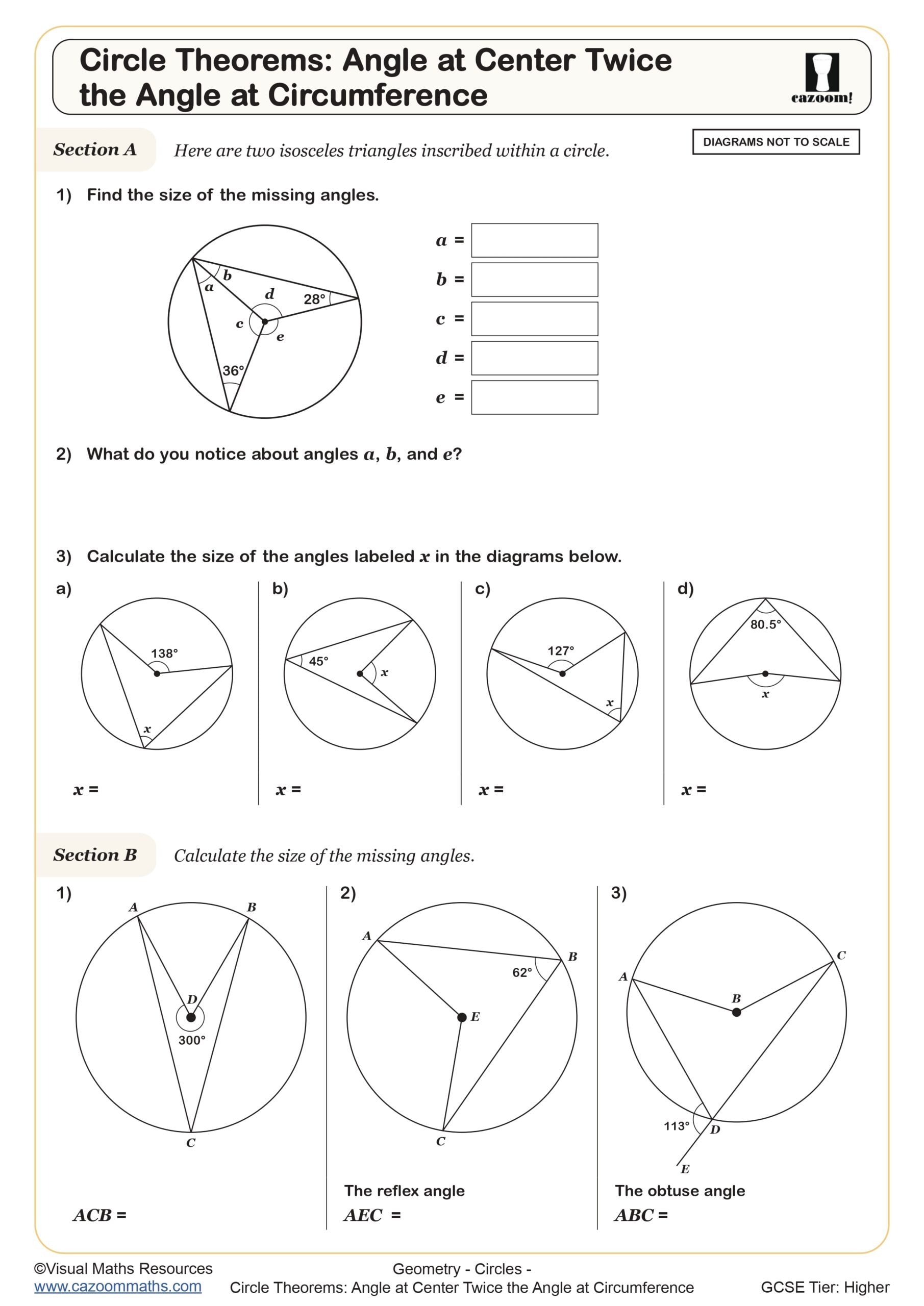
Circle Theorems: Angle Notation
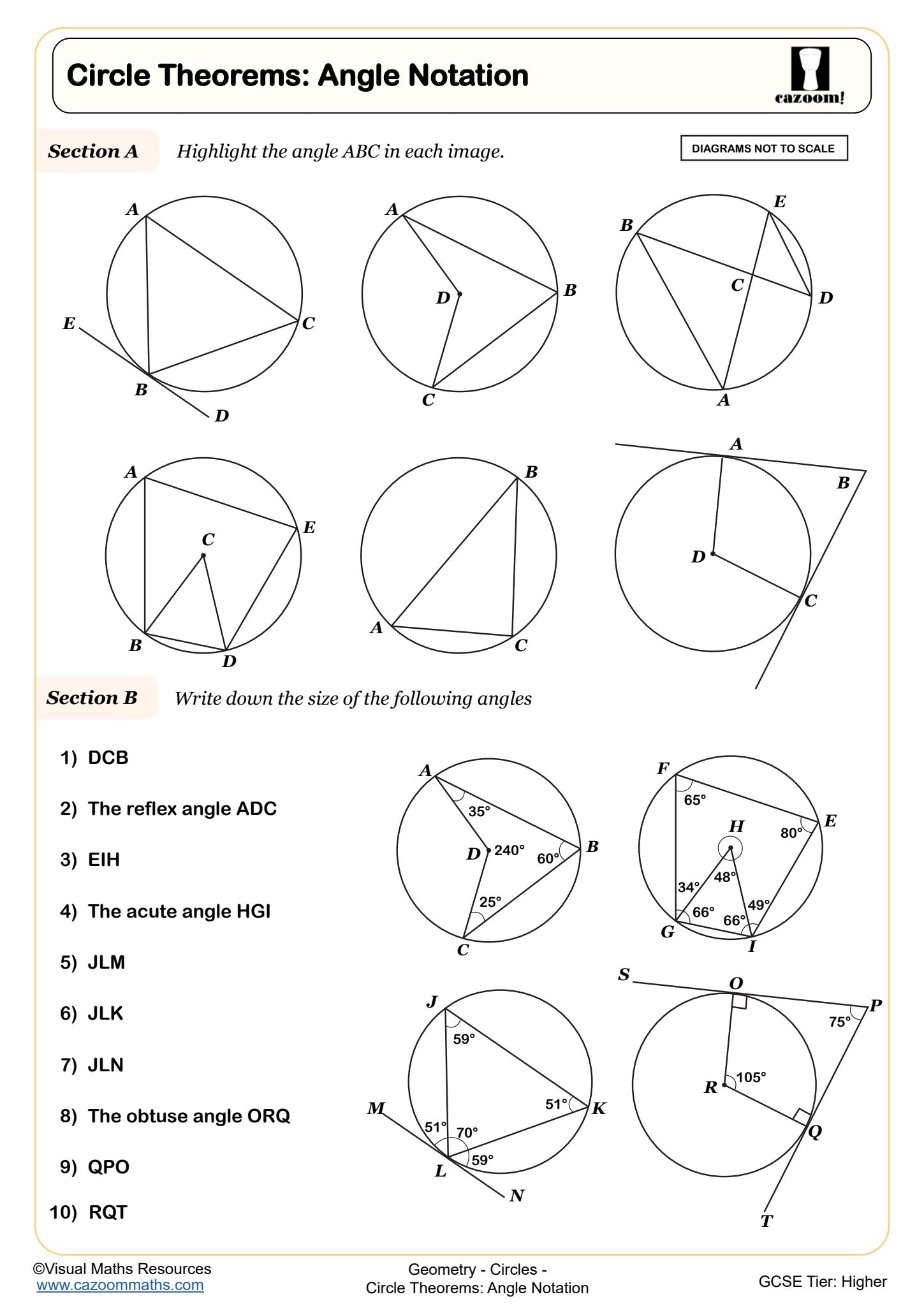
Circle Theorems: Cyclic Quadrilaterals

Circle Theorems: Triangles in Circles
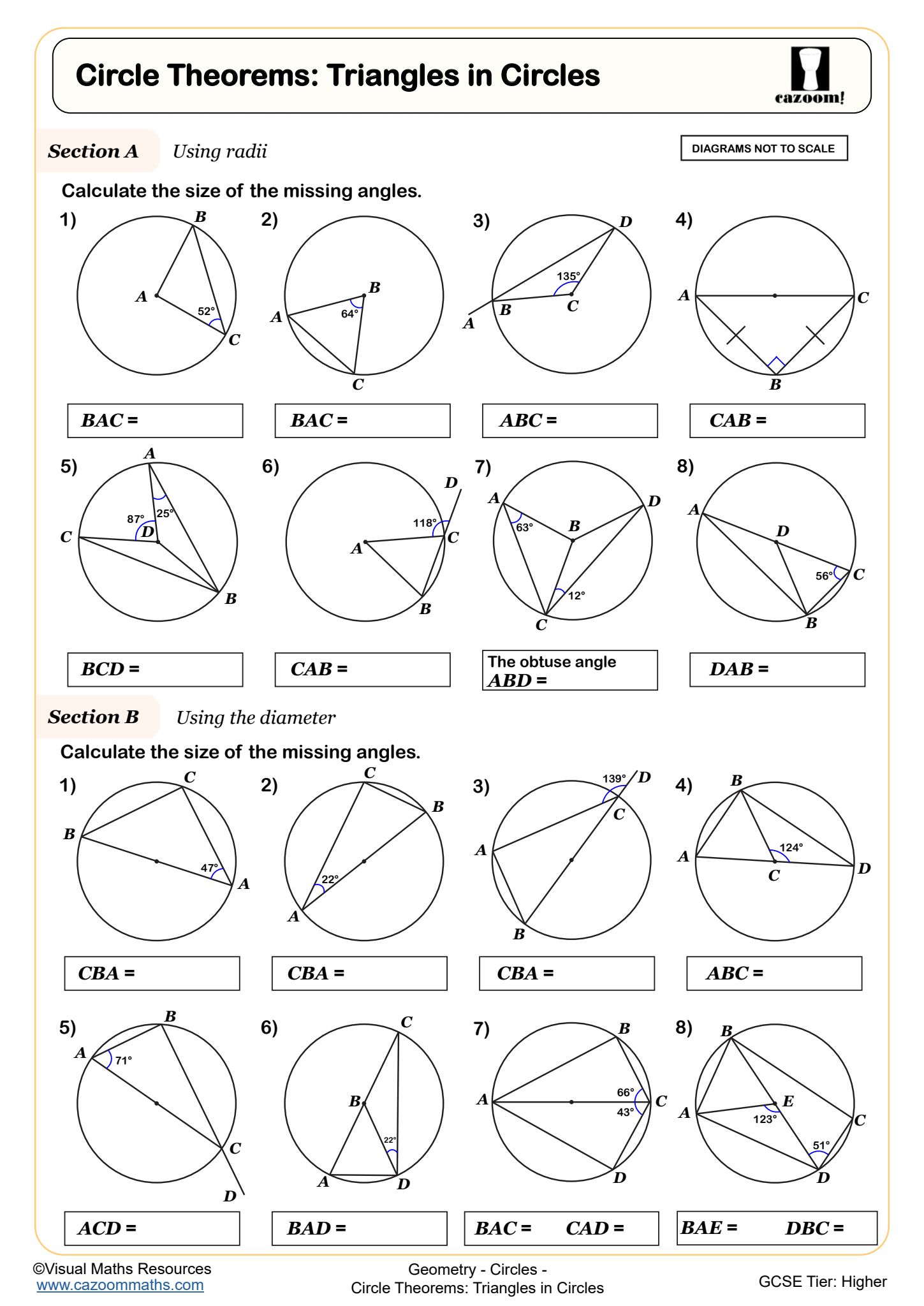
Learning the Circle Theorems
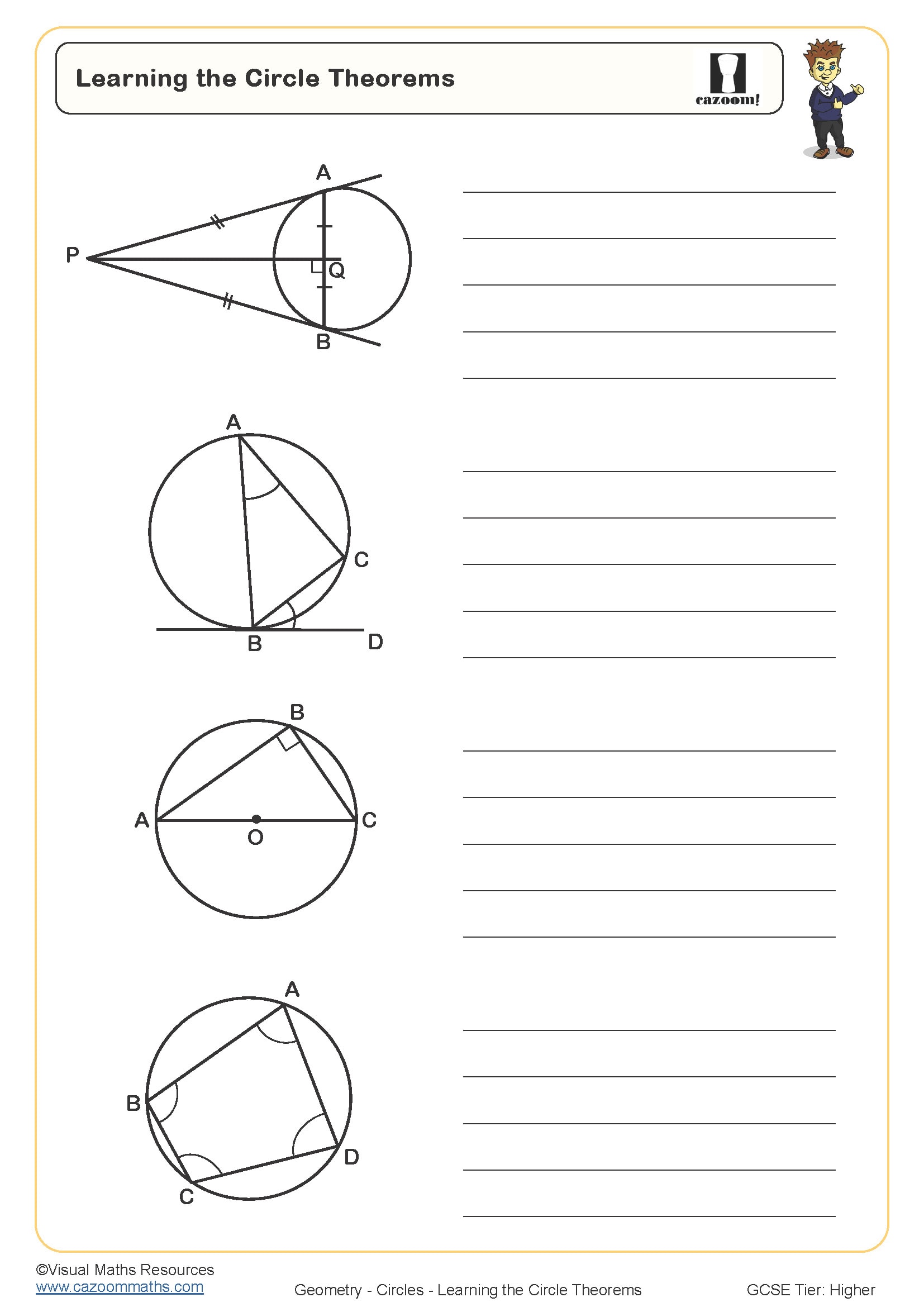
Proving Circle Theorems - Angle at the Centre
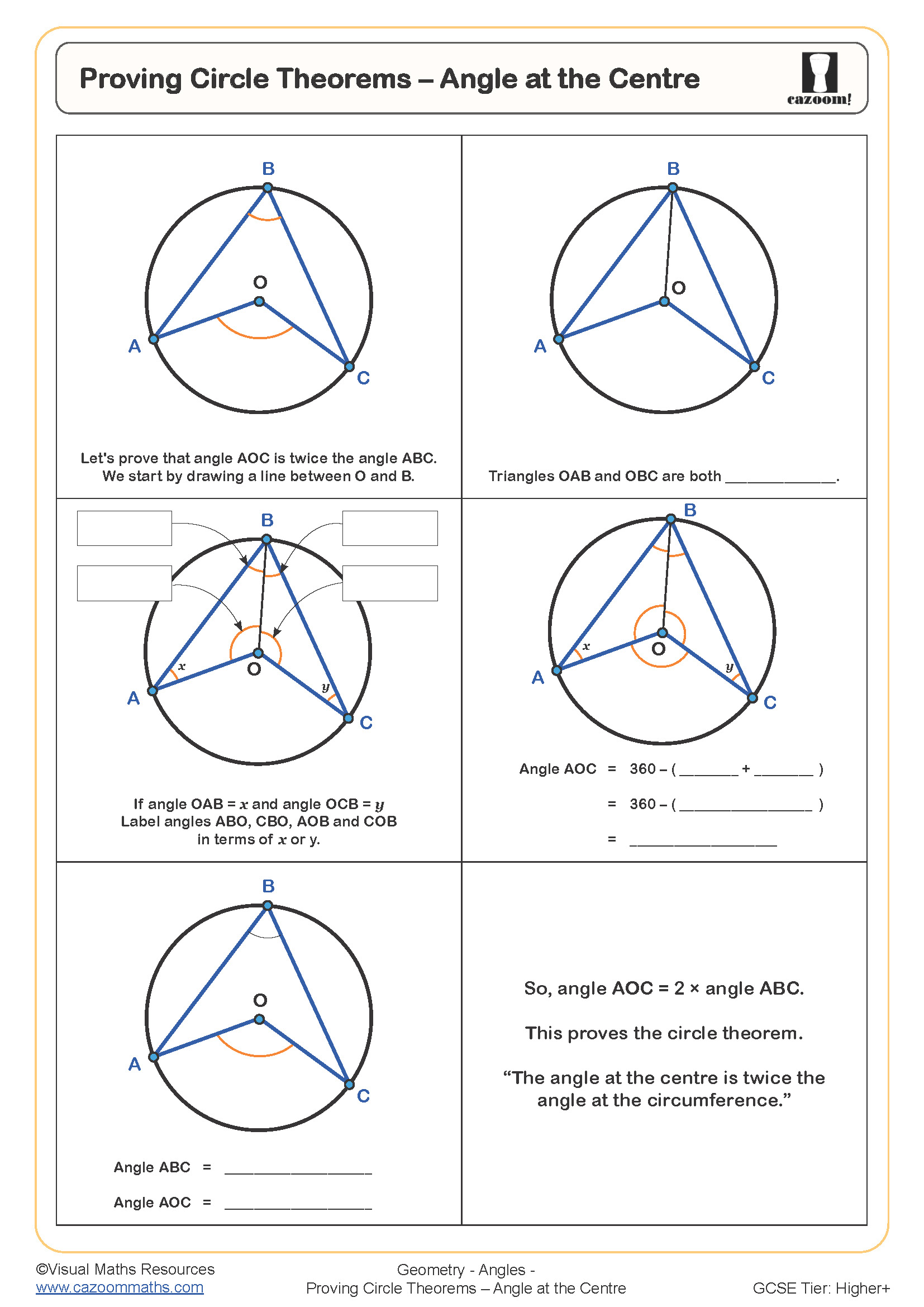
Proving Circle Theorems - Cyclic Quadrilaterals
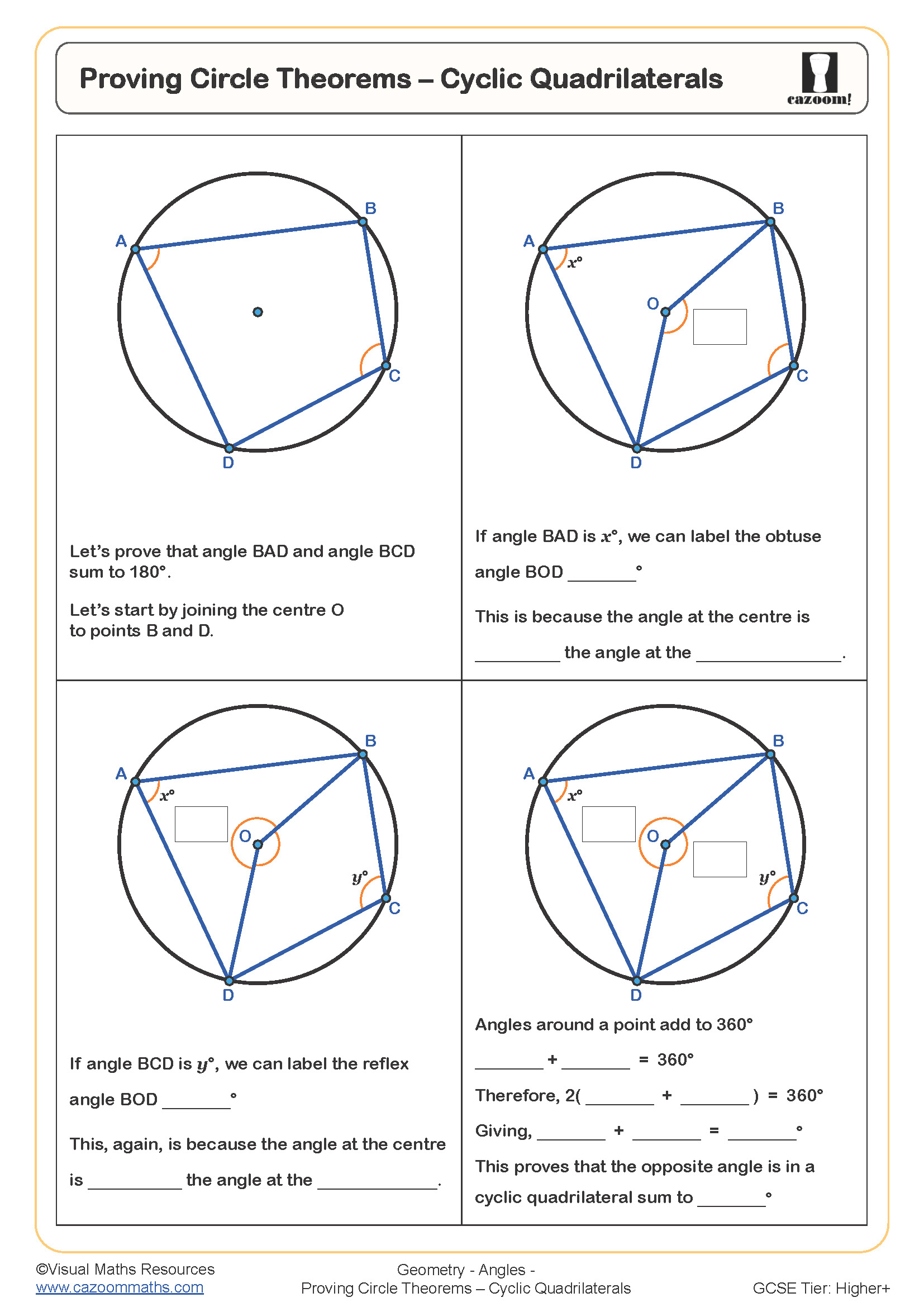
Premium PDF Worksheets with Detailed Answer Keys Included
Every worksheet on lines and angles comes with detailed answer keys for quick marking and self-assessment, which makes life so much easier for busy teachers. These ready-to-use, printable PDFs slot perfectly into existing lesson plans. Students get instant feedback on their progress, which really helps them spot mistakes early and build confidence. They're carefully aligned with current UK curriculum requirements, so you never have to worry about whether you're covering the right content for maximum educational impact and exam success.
Top-Quality GCSE Lines and Angles Worksheets That Actually Work
Our lines and angles worksheet PDF targets the exact GCSE topics that are important during revision time. Each worksheet carefully builds confidence through progressive difficulty levels that never throw students in at the deep end. They start with the basics and gradually work up to those tricky multi-step problems that appear in higher-tier papers. Students work systematically through calculating angles, measuring angles, and drawing angles using methods that actually stick in their heads. The visual format helps even the most reluctant mathematicians understand complex geometric relationships that often cause complete confusion in traditional textbooks.
What's Inside These Comprehensive Year 10 Geometry Resources
Our comprehensive collection covers absolutely everything your students need to tackle GCSE lines and angles with confidence. These aren't just random worksheets thrown together - they're carefully crafted resources that build understanding brick by brick:
• Angles on parallel lines - alternate, corresponding, and co-interior angles (the ones that always trip students up in exams)
• Triangle angle calculations - finding missing angles in various triangle types, including those awkward isosceles problems
• Polygon angles - interior and exterior angles of regular and irregular shapes that appear in both foundation and higher papers
• Angle relationships - vertically opposite, adjacent, and supplementary angles with real-world context
• Drawing and measuring angles - practical skills with protractors and geometric tools that students actually need for coursework
Each topic includes worked examples, step-by-step methods, and plenty of practice questions that mirror actual GCSE exam style. The progression within each worksheet means weaker students build confidence while stronger students stay challenged.
Amazing Real-World Uses Your Students Will Love
You'd be surprised how often your students encounter lines and angles in the world around them! Understanding these concepts genuinely opens doors to exciting career opportunities that will blow their minds. Here are some examples:
• Architecture & Building Design - Architects use precise angle calculations to design everything from skyscrapers to sustainable housing.
• Engineering Marvels - Civil engineers rely on exact angle measurements for bridges, tunnels, and those incredible roller coasters that make your stomach flip.
• Video Game Creation - Game designers use geometric principles to create realistic physics in popular games.
• Photography & Social Media - Professional photographers and influencers apply angle knowledge to create those jaw-dropping shots you see on Instagram and TikTok.
• Sports Performance - Sports analysts use angle data to improve performance in football, tennis, and basketball.
• Interior Design - Designers need to have basic knowledge of angles to make rooms look spacious and ensure furniture fits perfectly.